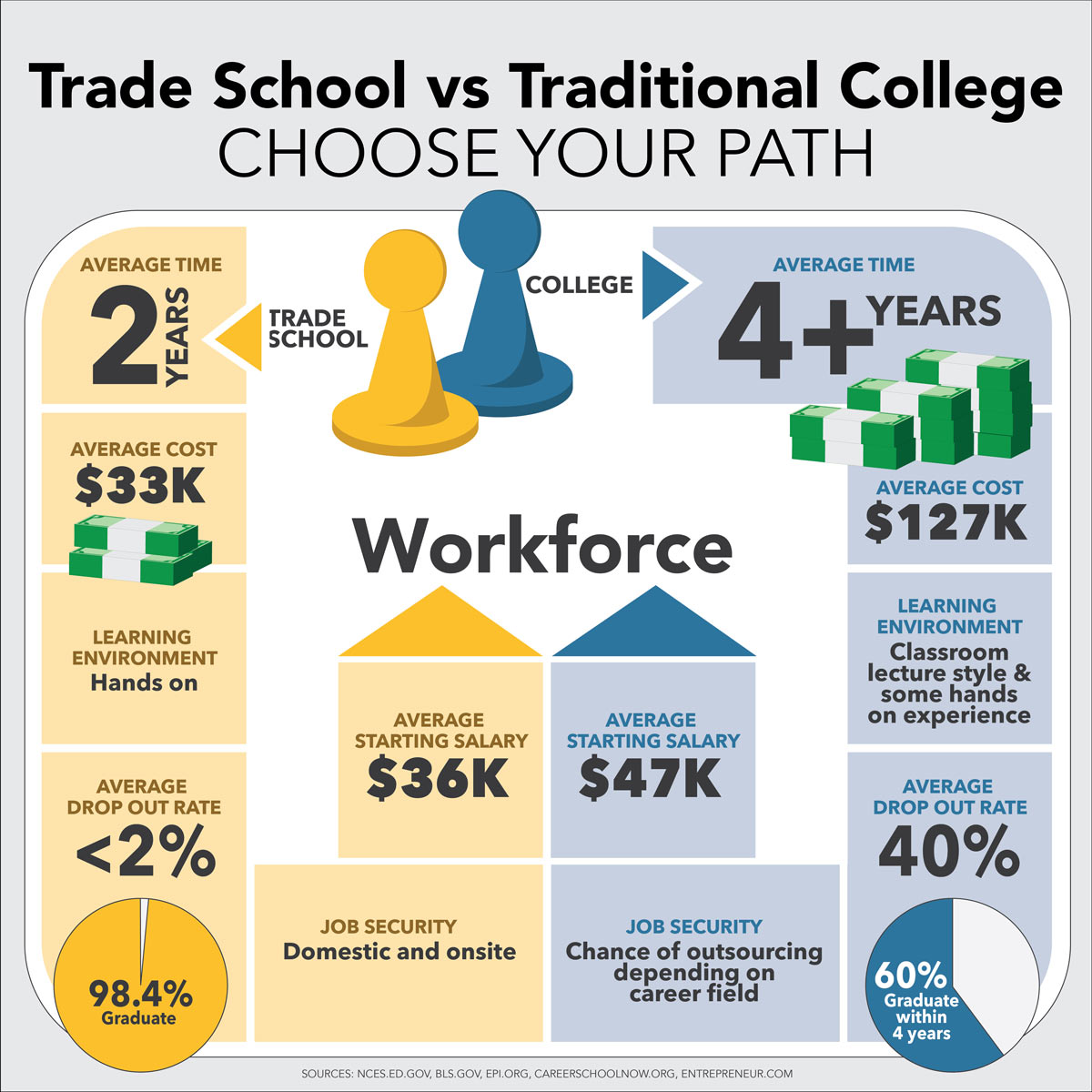Do you need help deciding between trade school and college? We've got a helpful guide for you!
Trade School vs College: Which is the Right Choice for You?

Traditional four or two-year schools aren’t for everyone. So before jumping into something that could leave you with a mountain of debt and a career field you’re not sure about, consider the pros and cons of going to a four college with going to a trade school.
On This Page
Trade School Is Ideal for Someone Who…
- Is sure of their desired career field.
- Learns by doing.
- Wants to obtain credentials and join the workforce quickly.
College Is Ideal for Someone Who…
- Learns well in a classroom setting.
- Is able to devote three plus years to education.
- Would like to take general class credits along with classes specific for desired career field.
Cost: Trade School vs. Traditional Four-Year College
Trade school runs, on average, around $33,000 from start to finish. With many students having around $10,000 left in loans. In comparison to a traditional four-year college, this is a huge monetary savings for trade school students.
The average cost for a bachelor’s degree is $127,000 from start to finish. With many students having around $37,000 left in student loans. This number varies depending on if the school is public or private and if the student has any scholarships or grants.
Length of Study: Trade School vs. Traditional Four-Year College
Trade school is a hands-on technical education. Since it’s focused on teaching a specific trade skill, there aren’t any general education courses outside of career specific classes. This dramatically reduces classroom time.
Some programs can be completed in six weeks to two years, depending on which trade and whether the student attends school full or part time.
A bachelor’s degree earning college experience can take anywhere from three to four-plus years depending on a student’s course load. The longer duration of this type of education is largely due to the fact that many college curriculums include general course credits.
Earning Potential: Trade School vs Traditional Four-Year College
When it comes to earning potential, trade school graduates aren’t earning much less than a traditional college graduate. The average starting salary for entry-level trade positions is $36,000. In comparison, bachelor’s degree holders, make on average an annual starting salary of $47,000. That’s $11,000 more than trade school graduates.
This may seem like a large monetary difference, but it’s important to weigh in the cost of paying off student loans. The average bachelor’s degree earning student loan debt is $37,000 compared to the average $10,000 loans for trade-school graduates. Also, keep in mind that trade school graduates enter the work force, on average, two years sooner than traditional college students.
Job Security: Trade School vs Traditional Four-Year College
Job security is a huge factor when deciding on a career field and working in the trade industry has long-term advantages that other career fields just don’t have. Many industry jobs in the US are outsourced overseas, and trade workers often have a greater level of job security than those who have a traditional bachelor’s degree. This is because all trade jobs are domestic and onsite.
Additionally, according to the U.S. Bureau of Labor Statistics, there is a positive job outlook for those interested in going into a skilled trade. For example, employment for electricians is expected to grow 14 percent between the years 2014 and 2024, while those working as plumbers, pipefitters, and steamfitters will see a 12 percent occupational growth.
While a college degree is necessary for certain occupations, trade schools can help students enter a specialized workforce in a quicker timeframe with significantly less debt. By doing research and by weighing the pros and cons of various career fields, you’ll feel confident knowing that you’re making the right choice for your future!



















